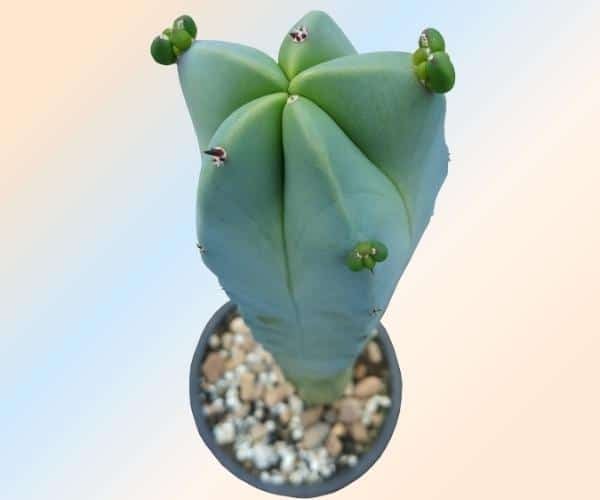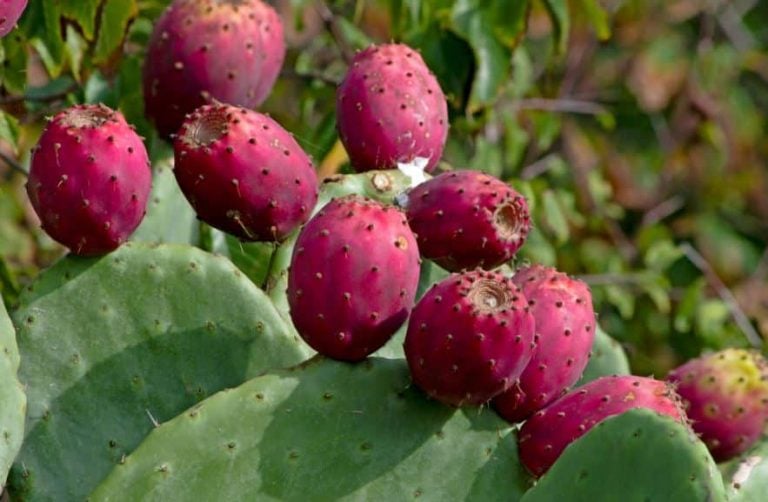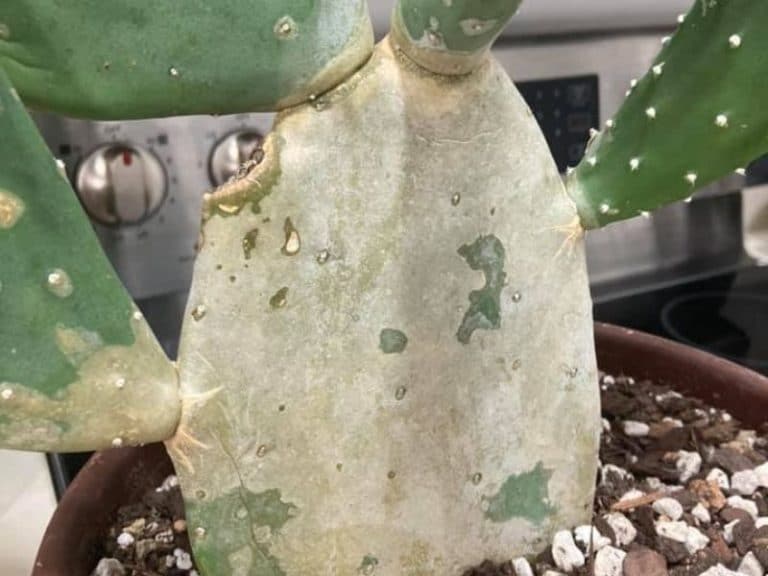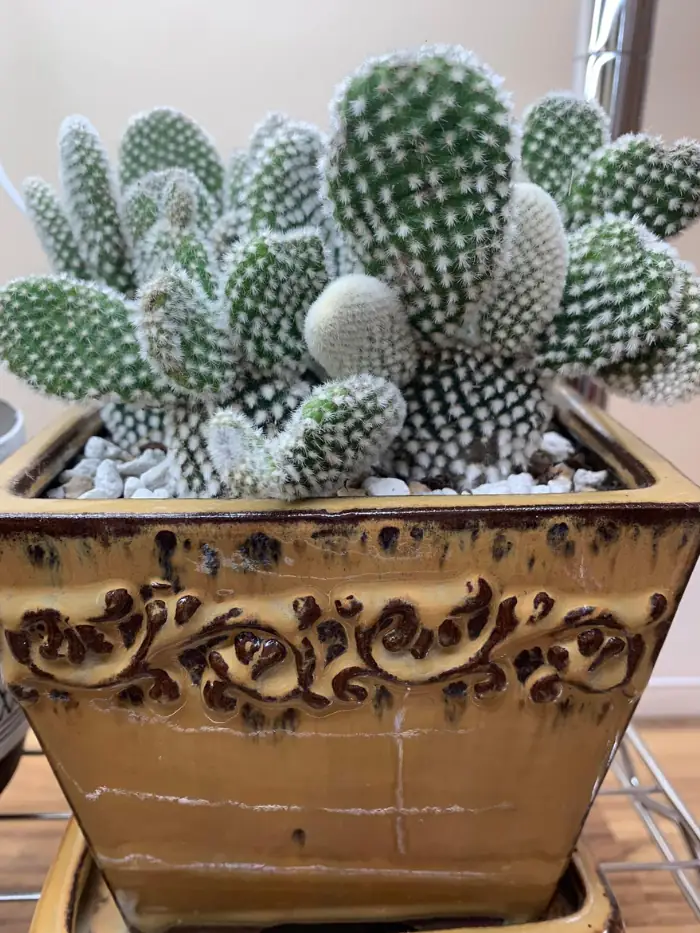Blue Myrtle Cactus Care Guide (Myrtillocactus Geometrizans)
Having a Blue Myrtle Cactus (Myrtillocactus Geometrizans) as a houseplant is rewarding because its edible fruits and gray-bluish hues make it a great addition to spaces.
So, what is so special about this cactus that cactus hobbyists rave about? Here is a care guide and extensive characteristics that differentiate it from other cacti varieties.
What is the blue candle cactus?

Blue Myrtle Cactus (Myrtillocactus Geometrizans) belongs to the family Cactaceae. Myrtillocactus is a derivative from a Greek word, myrtillus, which means small myrtle. Other scientific names it bears include:
- Myrtillocactus grandiareolatus
- Myrtillocactus geometrizans
- Cereus geometrizans
The Blue Myrtle is an evergreen cactus but may turn into elegant hues of gray and blue. Furthermore, it’s considered a delicacy in Mexico, thanks to the fruits it bears. You can find it at accredited gardening stores under the names:
- Bilberry cactus
- Whortleberry cactus
- Blue candle
- Blue torch
The Blue Myrtle is native to northern and central Mexico, over 1000m above sea level. The ones growing in their native environment (in xerophilous scrub and tropical deciduous forests) are more drought-resistant than ones grown as houseplants.
However, the latter category can also withstand neglect, making ideal houseplant choices for newbie gardeners and cactus-growing enthusiasts.
Features and characteristics of the blue myrtle cactus
When young, the Blue Myrtle grows into columnar shapes. By the time it clocks to maturity, dense stems will grow on its short trunk, hence developing a tremendous candelabrum shape. It can grow as tall as 16.5 feet and its crown to five inches in diameter.
At a glance:
- The plant has geometric patterns hence the genus name Geometrizan
- It is native to northern and central Mexico in over 1000m above sea level
- It produces sweet-tasting fruits which look like blueberries. However, its fruits can cause psychoactive ailments because it has mescaline, which is highly potent in hallucinogen
- It contains beneficial extracts like Peniocerol and Chichipegenin, which doctors can prescribe for patients with inflammation due to stage-one colon or breast cancer.
- While it’s not toxic, it can cause gastrointestinal issues in pets when eaten. Therefore, keep it away from pets.
Blue Myrtle Cactus Care
Here’s a summary of blue myrtle cactus care requirements:
| Watering | 0.8 cups every 12 days during summer; once a month in winter (preferably during early morning hours – 8 am-10 am) |
| Potting position | In less than one-foot on a south-facing window |
| Soil | A well-drained and aerated cactus peat-free soil mix with a pH of 6.1-7.3 |
| Temperature | Indoor temperatures between 70° F and 95° F. Won’t survive temperatures lower than 50° F |
| Humidity | 30% humidity indoors |
| Fertilizer | Slow-release high concentration of phosphorus and low nitrogen |
| Re-potting | Once every year |
| Propagation | Stem cuttings or seeds |
| Pest and diseases | Mealybugs, spider mites, and scales; root rot disease |
Unlike other succulents, Blue Candle is a fast-grower reaching up to 16.5 feet in height but only when exposed to the following growing conditions:
Water
Blue Myrtle cactus doesn’t need daily water because it’s succulent hence drought-resistant like other cacti. However, when left without water for more than a month in hot months like summer, its roots will struggle to thrive, causing its stems to shrivel up. If in a place without direct sunlight and potted in a 5-inch pot, give it only 0.8 cups of water every 12 days. Keep the watering to once a month during winter.
It’s not easy calculating how much water your blue myrtle needs because of the varying sizes of cups. Therefore, you should use a water calculator to get accurate measurements.
On the day you plan to water your Blue Myrtle, consider the following factors:
- Check the 1/4-inch of soil for total dryness before watering. Stick your fingers inside the soil or use a soil testing tool. Also, prod the soil around the drainage holes at the bottom. If it’s dry, then it’s ready for watering.
- Instead of irrigation through sprinklers, use the deep-watering method to ensure the roots get the water first. Do this by placing the porous pot or a different pot material with drainage holes on a sink of water. Wait at least thirty minutes before removing the pot and placing it on a saucer to drain off the water.
- Overwatering your cactus leads to wrinkly stems that may feel mushy. Also, the spines may appear dry and brittle when touched and may easily fall off. Unless you haven’t watered your plant more than a month in the hot months of summer, avoid the temptation to overwater it.
Soil
Like other cacti, the Blue Myrtle cactus grows well in a cactus potting mix, peat-free soil, or coconut coir mix with minerals like grit, sand, or perlite. The mix should be fast-draining and well-aerated to allow its roots to draw in oxygen to produce energy. The plant also prefers near-neutral soil pH of 6.1-7.3.
You can customize well-draining soil at home. First, get 2/3 minerals from the grit, sand, or perlite. Next, add 1/3 of organic matter like a high-quality peat-free compost or coconut coir.
Indoor growing plants need a soil mix as follows:
- Create a base by mixing equal amounts of bark and peat moss.
- Add coarse sand and perlite
For outdoor growing plants, consider the following:
- Creating a soil base by mixing equal amounts of bark and peat moss.
- Add sand and perlite alternatives like pumice or vermiculite
- Add insoluble grit or gravel to the mixture for easy drainage
For both methods, try pouring water to test its drainage capabilities. If it’s struggling to drain off the water, add more sand or gravel. If you’re unable to access these materials, Order readily mixed cactus soil from reputable garden supply retailers. Also, don’t base the mix using compost because it has rich nutrients which might burn the plant.
Fertilizer
Though it’s a hardy plant, the Blue Myrtle also needs fertilization during the active growing period in summer and spring. Don’t fertilize it during the winter months as it will be dormant; hence it won’t draw in the nutrients you give it.
To ensure its root system stays healthy and can survive harsh winters, give it a balanced cactus fertilizer. Use a high concentration of phosphorus and low nitrogen every four weeks during summer and spring for the best results.
Temperatures
Blue myrtle is a type of cactus that is quite a drought-resilient, but it will hardly thrive in freezing temperatures below 50° F. These temperatures attract frost, which may cause its death.
So, if you live in a cold-prone region, grow the young plant indoors first. Keep them warm using a frost blanket or sheets throughout winter. If you live in USDA zones 9a and 11b, where temperatures range between 70° F and 95° F., your plant will grow healthy and sturdy.
Should temperatures favor you and decide to grow it outdoors, keep it in a partially shady-like structure like under a tree, terrace, or patio. Once it matures, it will yearn for sunlight and enjoy its total exposure.
Repotting
Myrtillocactus geometrizans is a fast-grower, unlike other cacti variants. It can grow up to three feet in two to four years. As its maturity stage draws near (five years plus), it can grow as tall as 16.5 feet, spreading its stems.
The ideal time to re-pot it is after every year because of its shallow root system and dense-growing habits. Remember to place it in partial shade during winter to encourage dormancy.
The best potting container for this plant should be made from clay because they allow water to drain out quickly and are permeable. These two properties allow a smooth flow of oxygen to the roots. Other materials like plastic lacking holes can increase the chances of overwatering and compromise the roots’ breathability. Once you’ve re-potted it, don’t water it to prevent potting shock. It would acclimatize better if you avoid water.
Pests and diseases
Geometrizans might be hardy and pest resistant, but they can become susceptible to mealy bugs, scales, and spider mites when left neglected. Watch out for flies and bugs swarming around the plant as they can suck out the plant juices, compromising its health.
To dislodge the bugs, mix alcohol and a few drops of dishwashing soap. Add four parts of water and spray the plant to keep them at bay.
However, spotting an insect as small as a spider mite can be difficult. The easiest way to detect them is by checking the stems for discoloration or tiny shimmery webbing. In that case, soak the whole plant in distilled water to suffocate the mites. Next, apply neem oil mixed with water and spray it.
These plants can develop root rot in poorly drained soils when overwatered. The fundamental rule to preventing overwatering is applying water when the soil is completely dry.
Bees, moths, birds, and butterflies might prey on it because of the sweet-scented fruits and flowers it produces. Bats and sphinx months are a Blue Candle’s primary pollinators; hence you should learn to differentiate beneficial predators from non-beneficial ones.
Propagation

Propagation of the Blue Myrtle cactus works best with stem cuttings or seeds. Plants growing through seeds take slightly longer than the ones from stem cuttings. Here is a step-by-step guide per propagation method:
Seed Method
- Pluck a ripe fruit from an existing plant and collect the seeds. Wash it with water and allow it to dry.
- Add half the cactus soil mix to the container
- Add coarse sand to aid in fast draining
- Get a germination tray with a cover and mist it with water
- Put the seeds in clusters to help them germinate better
- Place the pot in a warm place with a south-facing window
- Wait for the seedlings to reach at least one inch before transplanting
Stem method
- Cut a four-inch stem using a sharp and sterilized knife
- Store the stem in a place with sufficient light but not direct sunlight for three weeks. Expect the cut wounded part to be hard and light-brown, forming a callus. If you’re unsure about its readiness, give it a soft tug. If it resists the tug, then it is ready. Avoid immersing it or spraying water on the stem because it’s a succulent that can survive drought up to that period.
- The callus is ready for potting in a six-inch container. Don’t force it in.
Blue Myrtle Cactus Flower
The blue myrtle cactus produces flowers during spring (between February and April) once it reaches a height of two feet. The flowers grow on the stem and have creamy green-white or yellow colors and grow into fruits resembling blueberries.
The plant might appear crowd-dense upon maturity, but it doesn’t match the size of its flowers (not bigger than 3-5 cm).
Because they have fleeting habits, you will only see the flowers for a day or two. Eventually, they produce oblong-shaped berries that are edible and tasty.
Blue Candle Cactus Fruit
Flowers produce deep bluish fleshy fruits that are edible after pollination. Bats and sphynx months are their main pollination agents. It’s no wonder the blue candle cactus plant blooms at night in mid-spring, starting February. The fruits are widely eaten in Mexico and grown for sale.
References





